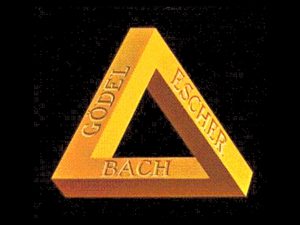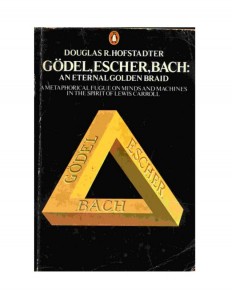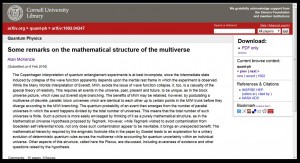
Candidly, I’ve lived with the idea of reality being purely a mathematical structure for so long that I’ve forgotten what it felt like before the penny first dropped. I owe my Damascene conversion in 1980 to Douglas Hofstadter’s brilliant, Pulitzer-Prize-winning book, Gödel, Escher, Bach: An Eternal Golden Braid, which was written primarily to explain the process of self-awareness. However, it was in these pages that I first learned of the existence of undecidable propositions: strings of mathematical symbols which combine to produce meaningful formulas but which are “undecidable” because neither they, nor their direct opposite, can be derived logically from basic axioms – basic definitions or truths – using the rules of that mathematics.
At that time, I had been preoccupied – maybe obsessed – with the puzzle of why the universe should choose one quantum outcome rather than another. What was it that made one outcome true when there was nothing in the universe that could predict that particular result over another? So, when I first read about these undecidable propositions, it seemed blindingly obvious: if you supposed that the universe were just a complex mathematical substructure within a wider mathematical structure, then you would expect the existence of undecidable propositions – phenomena that clearly existed, such as finding an electron with an up-spin rather than a down-spin, but which simply could not be explained using the rules of the universe itself. So, I thought, could the unpredictable results of quantum measurements be undecidable propositions in a complex structure based purely upon mathematical relations?

Just to be clear, it never crossed my mind that this could ever be a proof that the universe is a mathematical structure, but it did help me to come to terms with the notion that it might be possible when the accumulating evidence from entanglement experiments pointing to parallel universes, combined with concurrent developments in the abstract mathematics of string theory, seemed to leave less and less room for any other picture.
I spent all of my working life applying physics to solving problems in medicine, with an emphasis first in the field of medical lasers and then, later, in radiotherapy. So it was only when I retired at the end of 2009 that I felt able to return to my original field of theoretical physics. I published Lucy and David and the God Equation as a light-hearted attempt to get across the essence of my idea of the mathematical structure of the universe – see the book elsewhere in this website. Then I though it might be time to write down my idea more rigorously as a scientific paper.

Then I had to confront the biggest problem of all – much greater than the minor one of figuring out how the universe and the multiverse really work. The difficulty was that I had retired. I wanted to post my paper onto the electronic repository of scientific preprints of papers run by Cornell University, known as arXiv. Not only had I been using arXiv to keep myself updated (because papers appear there sometimes years before getting into a printed journal, and it’s free!) but papers on arXiv are much more accessible to the global network of scientists than is any particular journal, to which you or your university library generally has to subscribe before you get to see inside.
However, when I checked on Google, I discovered that if you don’t belong to an academic institution – and consequently don’t have an email address from that institution – then, if this is your first attempt at posting a paper on arXiv, your paper will most likely not be accepted. It is not a refereeing process; rather it is a moderating filter, to keep out crackpots like… er… me. Being retired, of course, I no longer had a respectable address.

Anyway, the good news is that my paper was kindly endorsed by Professor Ramin Zahedi at Hokkaido University and it appeared, after a slight hiccup, on 16 February (2016).
This is how the paper appears on the arXiv site (you click on the “Download PDF only” to read the paper itself). The paper contains a lot of jargon, and so I have decided to build the Plexus page on this website with links to explanations of the background to the paper, and I shall develop these in the months (and maybe years) to come.
